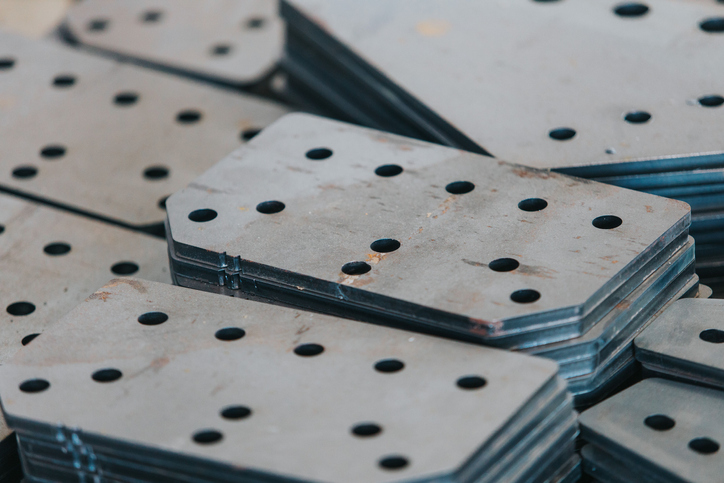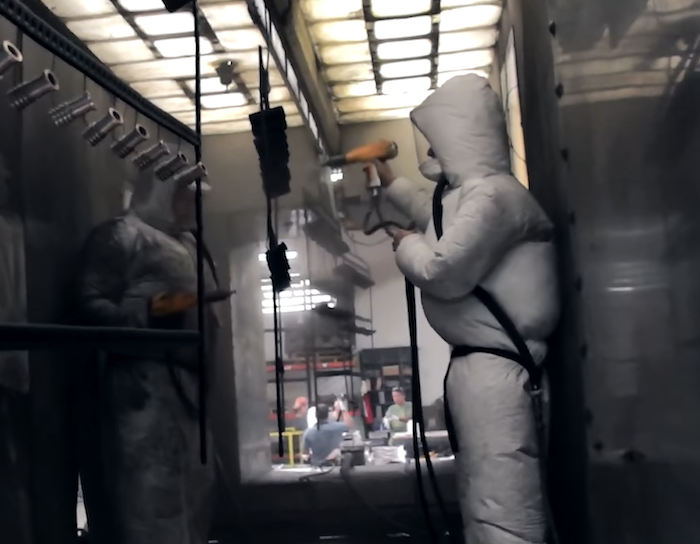Heat treatment enhances material properties such as surface hardness, mechanical strength, and wear resistance. Depending on requirements, different treatment processes, such as tempering, quenching, ausforming, normalizing, and austempering, exist.
Each method employs a specific process to change the metal’s microstructure (or grain structure) to achieve the desired properties level. This allows the material to fulfill the various requirements of its intended application.
The austempering process focuses on improving the mechanical properties of ferrous metals. The main properties that improve during the austempering process are ductility, strength, and hardness.
What is the Austempering Process?
The austempering process heats steel to a certain temperature range, followed by controlled cooling. As a result, the material achieves the desired bainitic microstructure.
A bainitic microstructure is a mixture of ferrite and cementite (Fe3C), a phase where carbon atoms dissolve within the iron lattice before the metal is cooled to form bainite. As a result, the fine needle or plate-like patterns of iron and carbon atoms develop in steel and other alloys’s microstructure. Meanwhile, carbon atoms precipitate as cementite within these plates( or at their boundaries). This uniform distribution of carbon within the austenite structure leads to superior mechanical properties.
The subsequent table outlines terminology in the heat-treating process.
| Term | Description | Role in Bainitic Transformation |
| Austenitizing Temperature | The temperature at which steel’s structure transforms to austenite. | It initiates the transformation process. |
| Iron Lattice | The geometric arrangement of iron atoms in the crystal structure. | A framework that changes during transformations. |
| Ferrite | A soft and ductile phase with a face-centered cubic (BCC) structure. | Ferrite forms the matrix of the bainitic structure. |
| Cementite (Fe3C) | A hard and brittle iron carbide forms in steel, contributing to hardness. | Precursor to bainite or martensite, depending on cooling. |
| Austenite Structure | Fe3C precipitates within bainite, which is responsible for hardness. | Precursor to bainite or martensite depending on cooling. |
Austempering Process: Step-by-Step
Austempering transforms the microstructure of steel and other iron alloys through controlled heating and cooling. It provides a four-stage process to induce the desired transformation.
Stage 1: Heating to Austenitizing Temperature
First, the material (often ferrous alloys with medium-to-high carbon content) is heated above its transformation range to achieve the austenitizing temperature, at which point the iron’s crystal structure changes to austenite. Meanwhile, a solution of sodium and potassium nitrite is commonly used as a heating medium.
The required heating temperature depends on the carbon content in the workpiece alloy.
For Example;
- Medium Carbon Steel (0.3% – 0.6% Carbon): 760°C – 925°C (1400°F – 1700°F)
- High Carbon Steel( 0.6% – 1.4% Carbon): 780°C – 980°C (1436°F – 1796°F)
In this phase, the BCC (body-centered cubic) structure of ferrite converts into the FCC structure of austenite, which can hold more carbon in solution. In an FCC (face-centered cubic) structure, iron atoms are located at each of the eight corners and the centers of all the faces of the cube.
Consequently, carbon atoms occupy the interstitial spaces (small gaps between the iron atoms) within the austenite FCC lattice. Here, the significantly larger interstitial sites are available for carbon atoms.
Stage 2: Controlled Quenching
After heating, the process involves quickly cooling the work material to an intermediate temperature range (480°F to 750°F). This stage avoids martensite formation and directs towards the desired bainitic structure.
The austenite decomposes into acicular ferrite and carbon-enriched areas, setting the foundation for bainite formation. Basically, more and more carbons are moving within the interstitial space of the FCC structure.
Stage 3: Austempering Temperature
This stage involves holding the metal at the intermediate temperature until the bainitic transformation is complete. The duration of this hold and temperature depends on whether the end result requires upper or lower bainite formation. Upper bainite forms at relatively higher temperatures and with a coarser microstructure, while lower bainite forms at lower temperatures with a finer microstructure.
Here, the austenite gradually transforms into bainite, characterized by fine, needle-like ferrite and a dispersion of cementite particles.
Stage 4: Cooling to Room Temperature
The final step is cooling the material to room temperature after the bainitic transformation. It solidifies the microstructural changes.
At this point, the microstructure is completely stabilized, locking in the unique properties imparted by the bainitic phase.
Austempering Vs. Ausforming: Key Differences
Ausforming provides an extended version of the austempering process. It involves an additional deformation step while the steel is in the austenitic condition before bainite transformation. This step refines the grain size of the final bainite structure, further enhancing its strength and toughness.
Compared to austempering, it is a more complex process and requires precise control over temperature and deformation rates. This surface treatment is ideal for high-performance components, such as automotive components and machinery parts, where superior strength and fatigue resistance are essential.
| Feature | Austempering | Ausforming |
| Temperature Range | Austenitizing (1340°F to 2190°F) and Quenching (480°F to 750°C) | Similar temperatures to austempering with, deformation being performed at the austenitizing point. |
| Changes in Microstructure | Conversion of austenite to bainite (acicular ferrite and cementite) | The deformation step refines the grain size and the final bainite structure. |
| Mechanical Properties | Significant increment in mechanical strength, toughness, and wear resistance. | Fatigue resistance and even higher strength and toughness due to grain refinement. |
| Applications | Automotive parts like gears and shafts, agricultural machinery, and railway components. | High-performance aerospace and automotive components, high-stress parts like bearings, and gears. |
| Limitations | Limited material compatibility and depth(5mm), more complex process, and costly than conventional heat treatments. | Precise control over deformation is necessary. |


